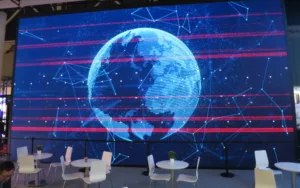The 8K x 4K main screen with a 1.2mm pitch in the Aoto Booth was very impressive. (Credit: M. Brennesholtz)
While Aoto was not showing any new products at ISE, their 8K x 4K main screen was very impressive, and it took a lot to impress me on Friday afternoon of a four day trade show. It had a 1.2mm pitch, 24 bit drive, good color and contrast. When I walked up to it, I still couldn’t see the pixels. With the color, contrast and good detail, the screen almost looked 3D. It was driven by a one-of-a-kind controller built by Aoto, the 64K, that they haven’t decided if they will turn into a product.
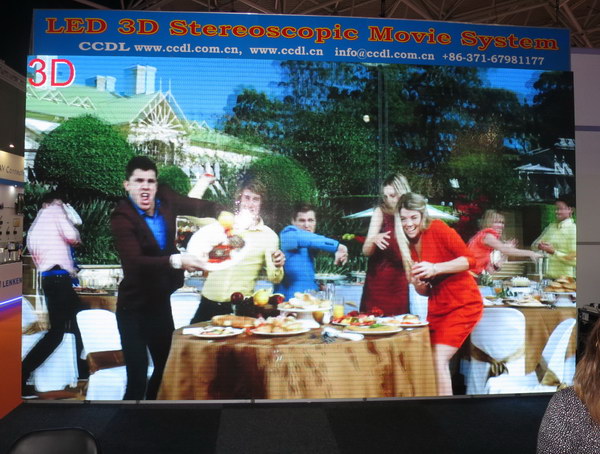 3D LED videowall from CCDL for use with passive glasses. (Credit: M. Brennesholtz)
3D LED videowall from CCDL for use with passive glasses. (Credit: M. Brennesholtz)
Central China Display Labs (CCDL) was showing their 3D LED screen where viewers used passive glasses to see the 3D. The images were good, but applying polarizers to the pixels of a LED display cuts the efficiency of the display in half, either reducing brightness or doubling power consumption. I do not believe this is a new product and I think I’ve seen it before. Very little information is available on it, either in the ISE booth or on the company’s website. (We saw the display at CES and last year at Infocomm. Man. Ed.
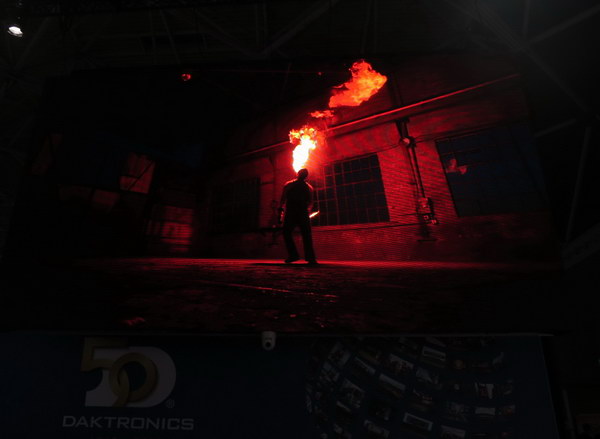 HDR image on a screen at the Daktronics booth. (Credit: M. Brennesholtz)
HDR image on a screen at the Daktronics booth. (Credit: M. Brennesholtz)
In the Daktronics booth at ISE, they had a demonstration of a prototype chip-on-board (COB) display module with a 0.96mm pitch. No photos were allowed of it, however. Brent Joffer, the Daktronics rep I talked to, told me COB provides several advantages to LED videowalls, including improved durability, brightness, power efficiency, heat dissipation and dynamic range. This increase in dynamic range, he said, will allow LED videowalls to do true HDR. He added that Daktronics is expecting to introduce COB LED displays next year. In terms of new displays, he showed me a 2.5mm pitch unit with 10 bit drive that can do HDR now, even if it isn’t COB. He also showed me a new tool that allows the removal of a LED module from the front of a display and has a reduced chance of damaging the module than a conventional tool.
Dicolor’s new product for ISE was their M-Pro series which target the rental market. There are two products in this series. The first, the M-391Pro is for indoor use (Front IP40, Rear IP21) and has a pixel pitch of 3.91mm and a brightness of 800 nits. Module dimensions are 500 x 1000mm. The second member of the family, the M-480Pro is for outdoor use (IP65 front, IP54 Rear). It has a pixel pitch of 4.81mm and a brightness of 4500 nits. Module size is 500 x 1500mm. Both M-Pro modules have 16 bit color depth.
Everlight Electronics is a major packager of LED chips and had a booth at the show to highlight new devices. In particular, the firm was highlighting the rugged and waterproof nature of its outdoor-rated devices. It was showing its HNB2727W-OS01 which can be waterproofed to IPX8. The series is intended for applications in the pitch range 5mm to 8mm.
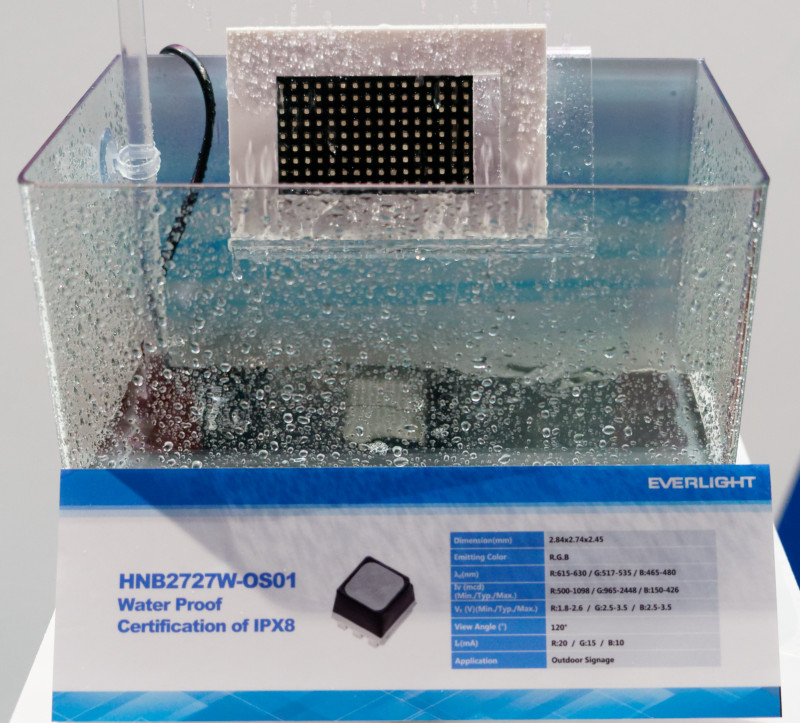 Everlight was showing the waterproof properties of its outdoor LEDs. Image:Meko
Everlight was showing the waterproof properties of its outdoor LEDs. Image:Meko
The company was also showing its latest narrow pitch devices which use 0606 packaging and are being used down to 0.9mm pitch and can even be used down to 0.7mm. The company also highlighted in its release (although staff didn’t tell us about it at the booth) that it has developed a 19-049 RGGB device which can be used with a double frequency drive system to allow ‘virtual pixels’ down to 0.6mm using time domain techniques. At the high speed, the persistence of vision works to increase apparent resolution without doubling the number of devices.
 Everlight also showed its fine pitch devices. Image:Meko
Everlight also showed its fine pitch devices. Image:Meko
InfiLED was exhibiting at ISE but I was told that most of their new product introductions would take place at the PLS show in Frankfurt in April. The company’s AC series is still in test. The InfiLED rep promised to send me information on the new DB series but he never did. When I tried to go to the InfiLED web site, Google gave me a warning that the site was a source of malware, so I did not continue to it.
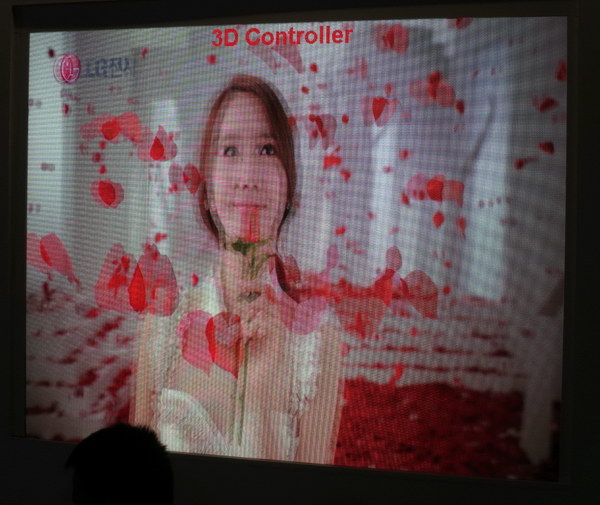 3D video on a ROE videowall driven by a Linsn controller. (Credit: M. Brennesholtz)
3D video on a ROE videowall driven by a Linsn controller. (Credit: M. Brennesholtz)
Shenzhen Linsn Technology Development Co., Ltd. makes LED videowall control systems, not the videowalls themselves. At ISE it was demonstrating a variety of its existing products plus one new one, the 3D260 controller for 3D content on LED videowalls for viewing with active glasses. They were demonstrating the system on a ROE array. It seemed to work OK but it’s hard to judge something like that when Linsn got to choose both the content and the display.
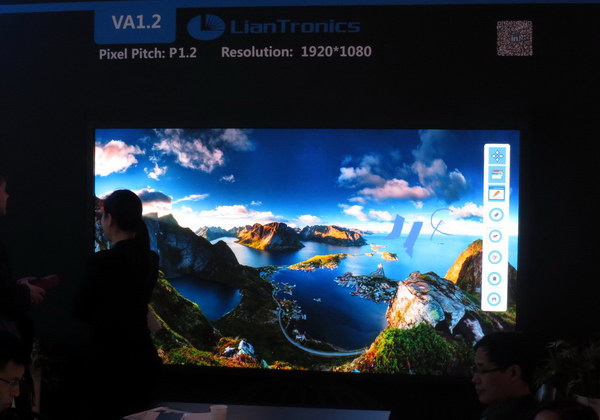 LianTronics Packaged conference room display with 1.2mm pitch and 1920 x 1080 resolution (Credit: M. Brennesholtz)
LianTronics Packaged conference room display with 1.2mm pitch and 1920 x 1080 resolution (Credit: M. Brennesholtz)
LianTronics was exhibiting at ISE but had no new videowalls to introduce. They did launch an IR multitouch system for use with their VA series of fine-pitch videowalls. The IR system can also be used with their RE series of curvable LED screens for rental. Like many other companies, they want to start selling packaged solutions, such as the conference room display in the photo, rather than just LED videowalls.
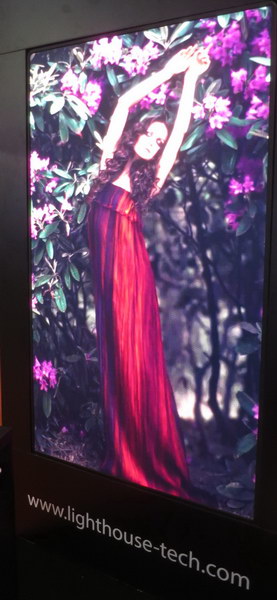 Lighthouse integrated signage display. (Credit: M. Brennesholtz)
Lighthouse integrated signage display. (Credit: M. Brennesholtz)
Lighthouse Technologies was showing two new technologies at ISE. First was a luminance enhancement technology. This wasn’t hardware – it was an algorithm implemented at the processor level to make blacker blacks without affecting the whites. Second thing were integrated 89” and 115” digital signage displays. These were complete LED display systems with a 2.5mm pitch. They looked OK but I would have said a finer pitch was needed for displays like this that would be viewed from very close up.
Macroblock was at the ISE to discuss the design of their LED driver chips into the products of the literally hundreds of LED videowall manufacturers exhibiting there. Lisa Liu, Marcom Deputy Manager at Macroblock, told me their new MBI5359 chip is the most powerful LED driver chip in the industry. This chip has 48 channels and each channel is multiplexed into 32 LEDs, implying the RGB LEDs in 512 pixels could all be driven by a single chip. In addition, she say the Macroblock MBI5359 is the first in the industry have a “True 16-Bit Grayscale.” This specific feature enhances HDR visual performance on LED displays. True 16-Bit Grayscale allows the MBI5359 to deliver superior images with wide grayscales at a high refresh rate (3840Hz) with a high contrast on LED displays. Macroblock had a side-by-side demo of identical videowalls, one with a 14 bit drive and the other with a 16-bit drive from the MBI5359. While the visual differences between the two displays were subtle, there was definitely an improvement in grayscale.
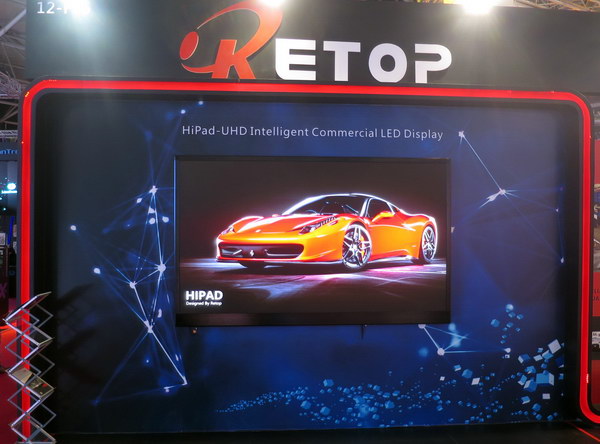 Retop HiPad 1.5mm display at ISE (Credit: M. Brennesholtz)
Retop HiPad 1.5mm display at ISE (Credit: M. Brennesholtz)
Retop was featuring their new HiPad 1.5mm pitch display in their booth at ISE. The unit has a total thickness of just 45 mm. This system comes in standard sizes of 110”, 137.5” and 165”, although sizes up to 302” are available. This system is available in 1.2 and 1.9mm pitches. Retop wants to sell the whole HiPad solution, not just the display modules.
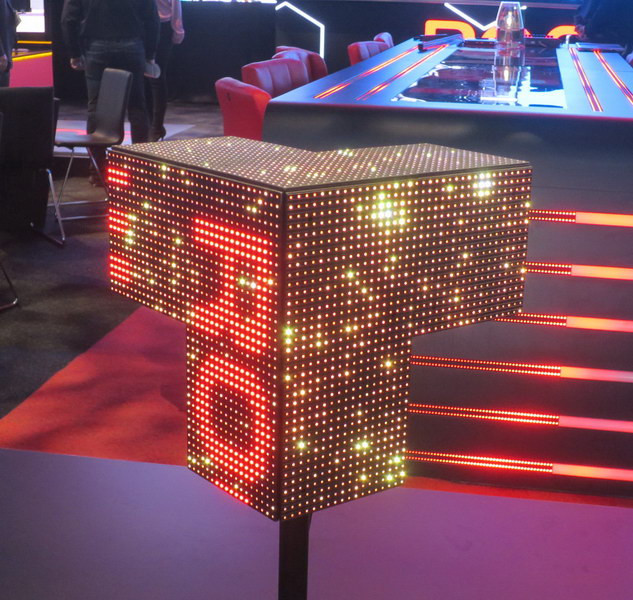 The ROE block is intended to make 3D shapes. (Credit: M. Brennesholtz)
The ROE block is intended to make 3D shapes. (Credit: M. Brennesholtz)
ROE was showing two new products. The first, called the Block is 250mm square and the LEDs have a 8mm pitch. It is intended to create eye-catching 3D shapes. The second, the Diamond 2.6 with a 2.6mm pixel pitch is currently in testing at ROE and is expected to be available in September.

